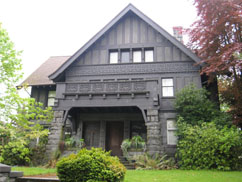Historic Buildings
Washington State has a rich built environment that includes buildings, structures, districts and objects that date back to the 1850s. These historic resources have been recorded since the early 1900's and provide a valuable, physical reminder of our past.
The historic era is considered to begin at the time of first European contact with Native Americans. For present day Washington State, this contact usually dates to the 1790's. Historic properties are continuously being identified and documented. On average, hundreds of inventory forms arrive at DAHP each month for review and inclusion into the State's Inventory of Cultural Resources. To date over 600,000 historic sites have been recorded. Approximately 1,800 of these sites have been recognized for their exceptional significance and have been added either to the State or National Registers of Historic Places.
 The Inventory encompasses a wide range of historic property types such as rural structures, industrial complexes, recreational properties, transportation infrastructure, commercial and domestic properties.
The Inventory encompasses a wide range of historic property types such as rural structures, industrial complexes, recreational properties, transportation infrastructure, commercial and domestic properties.
Discussion of the state's historic built environment would not be complete without acknowledging a growing public interest in historic properties constructed from the post WWII era. Such properties include those associated with America's roadside culture including motels, drive-in restaurants, gas stations and automobile dealerships. However, interest in the recent past goes beyond popular culture to include modernist skyscrapers, shopping centers, churches and suburban housing tracts.
In 2003 DAHP took the lead by launching the state's first attempt to spark the discussion and appreciation of the built environment that best represents the last 50 years. The "Nifty From the Last 50 Initiative" launched at the State Historic Preservation Officers Award Ceremony, involved a grass roots approach to identify and document such sites for future reference in the state database.




